More and more people are growing their own strawberries as a hobby or as ornamentals or for production in their home gardens. Few things are as frustrating as eagerly anticipating years of bountiful strawberry harvests and then watching the plants go from apparently healthy to wilted. Wilting strawberry plants can make even the most stolid gardener attempt to forcibly remove his own follicles in a fit of perplexity. This post is a review of what causes strawberries to wilt.
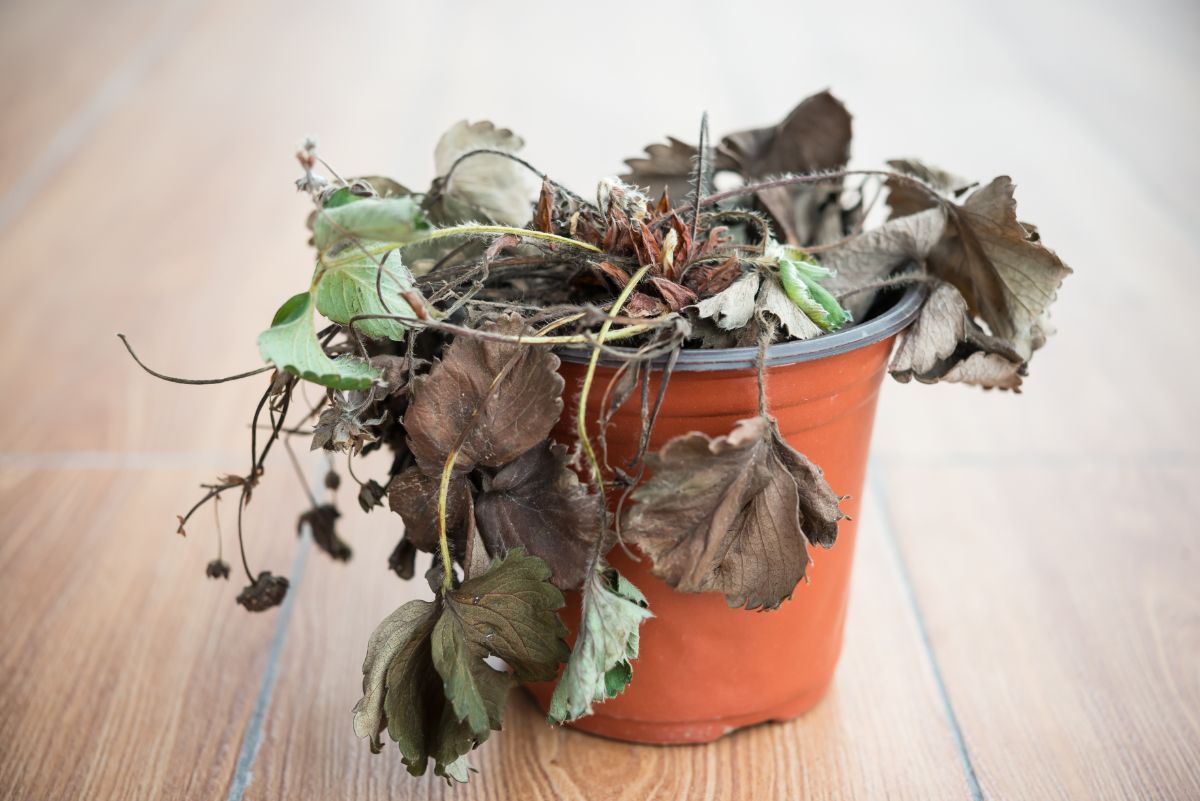
Sometimes wilting strawberries can be salvaged if the underlying cause is discovered and remedied. Oftentimes, however, once the wilt sets in, there is little that can be done if it is caused by a pathogen.
For the sake of accuracy, it is good to distinguish between non-infectious wilting and blight. Both look similar and can be easily confused, but they are actually different. Blights can lead to wilting strawberry plants, but wilting is a symptom only. Wilting is evidence of a problem, not necessarily a disease (blight).
Jump to:
- Why Do Strawberry Plants Wilt?
- Causes of Wilted Strawberry Plants
- 1. Drought causes wilting strawberries…
- 2. Low temperatures cause strawberries to wilt…
- 3. Strawberries wilt when in high-salinity environments…
- 4. Saturated soil causes wilting strawberries…
- 5. Wilting is part of the disease/infestation process…
- Wilting Strawberry Plants: Conclusion
Why Do Strawberry Plants Wilt?
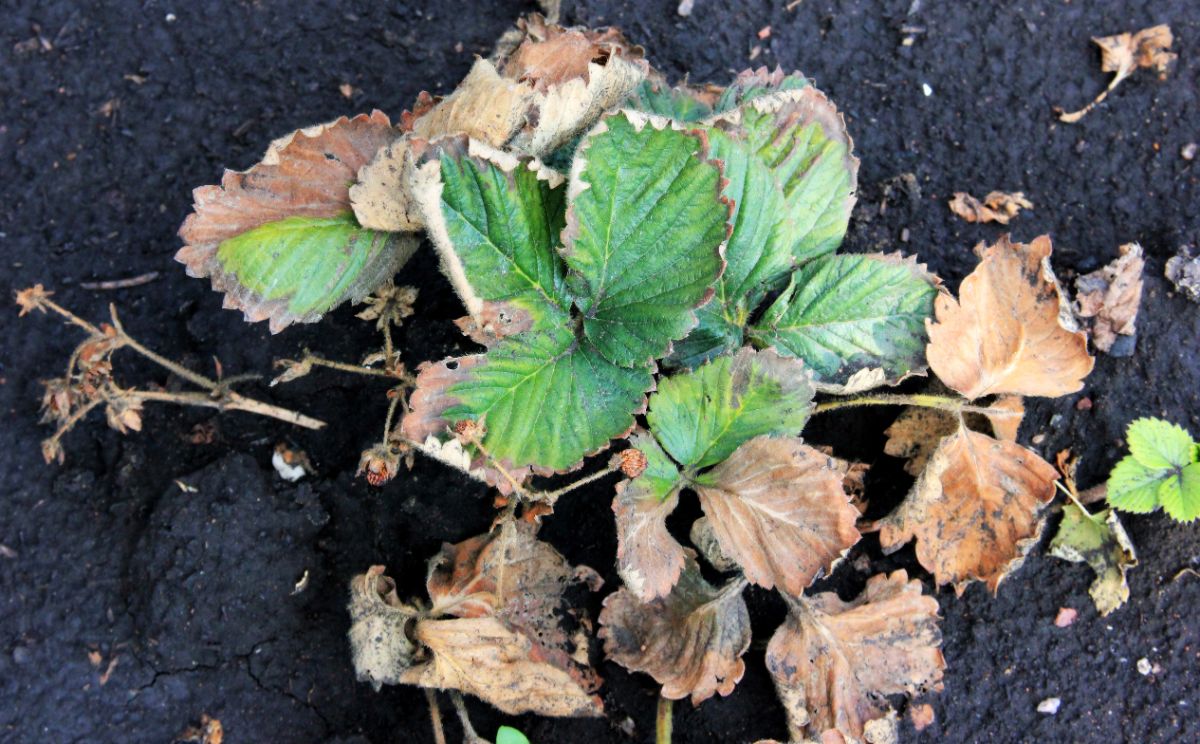
Strawberry plants are forbs. This means that they lack the above-ground woody tissue that many plants have (like trees), but they are still vascular. Without the woody tissue, their stems cannot thicken and stiffen to support increasing vertical growth. Consequently, they are short and rely on turgor pressure to maintain an erect habit. At the cellular level, strawberry plants have cell walls. Turgor pressure is the pressure derived from the inner plasma membrane pushing against the outer cell wall due to osmotic forces. Water from outside the cell moves from an area of low solute concentration into the cell’s vacuole, which has a higher solute concentration. This increase of water inside the cell causes the turgor pressure and the plants rely on this turgidity to maintain their rigidity (which gives them their normal shape and appearance). If they lose their turgidity, they lose their rigidity, and they wilt.
Causes of Wilted Strawberry Plants
There are numerous conditions that cause strawberry plants to wilt. This list does not purport to be exhaustive. But, if you are experiencing droopy plants that look to be dying, there is a good chance that one of the causes in the list below is at the root of your problem. If you can remedy the problem fast enough, wilting can and will reverse, and the plants will regain their vitality as turgidity is restored and proper function is attained again. These are the top 5 causes of wilting strawberries:
1. Drought causes wilting strawberries…
If your strawberries experience drought-like conditions, they will wilt. A continual supply of water must be transmitted from the roots upward and into the cells to allow osmosis to maintain turgor pressure and rigidity within the plant tissues. If no (or not enough) water is available, the droop will set in shortly thereafter.
2. Low temperatures cause strawberries to wilt…
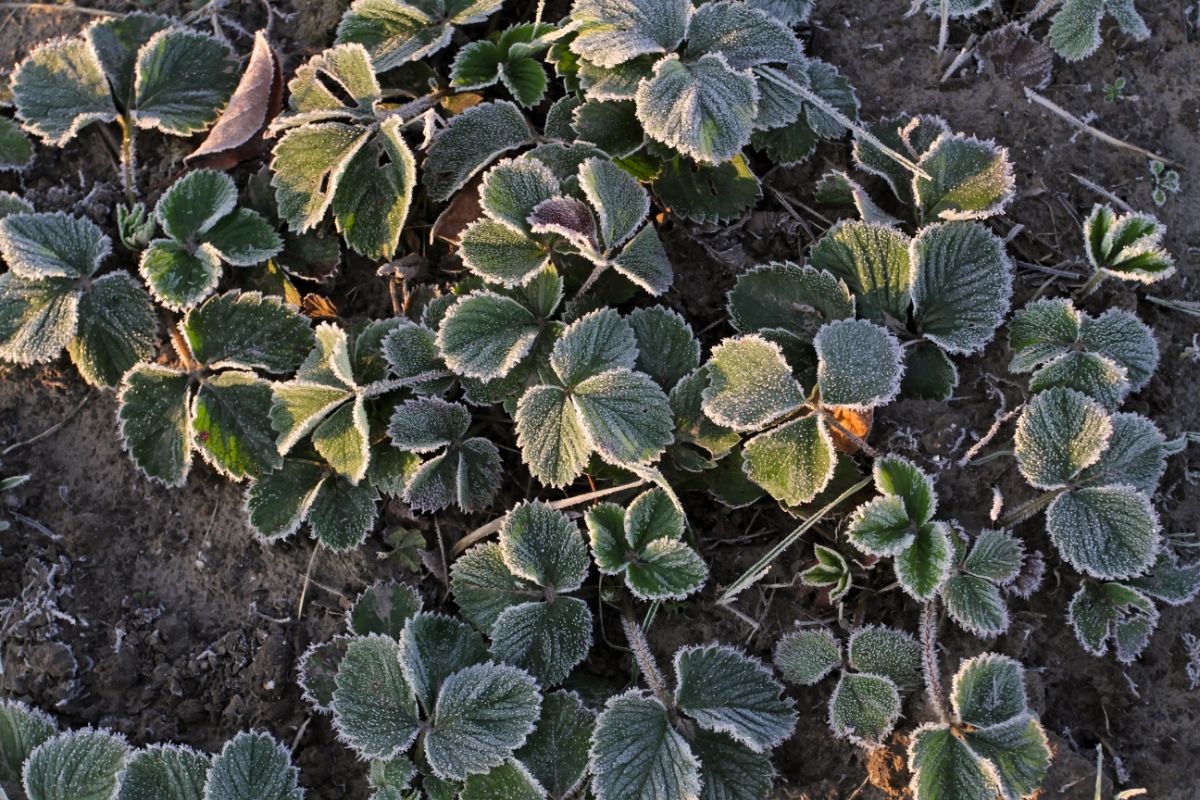
Cold temperatures prevent the free flow of water through a strawberry plants vascular system. As with drought above, this results in insufficient water passage through the plant, the loss of turgidity, and the loss of rigidity. The plants will droop when the weather gets too cold to maintain proper cellular function. Fortunately, strawberry plants recognize this temperature shift and will go dormant instead of dying as most annual plants will. Then, when temperatures rise again toward the end of winter, the plant wakes again and sends forth new foliage that functions appropriately at the cellular level.
3. Strawberries wilt when in high-salinity environments…
Turgor pressure is the result of osmotic forces. Water will move across a semi-permeable membrane to the area of highest solute concentration. If the salinity of the surrounding environment is higher than that within the cell, the same osmotic draw that normally pulls water into the cell to maintain turgidity will work in reverse. As water is drawn from the cells and into the environment of higher solute concentration outside the cell, it will wilt.
4. Saturated soil causes wilting strawberries…
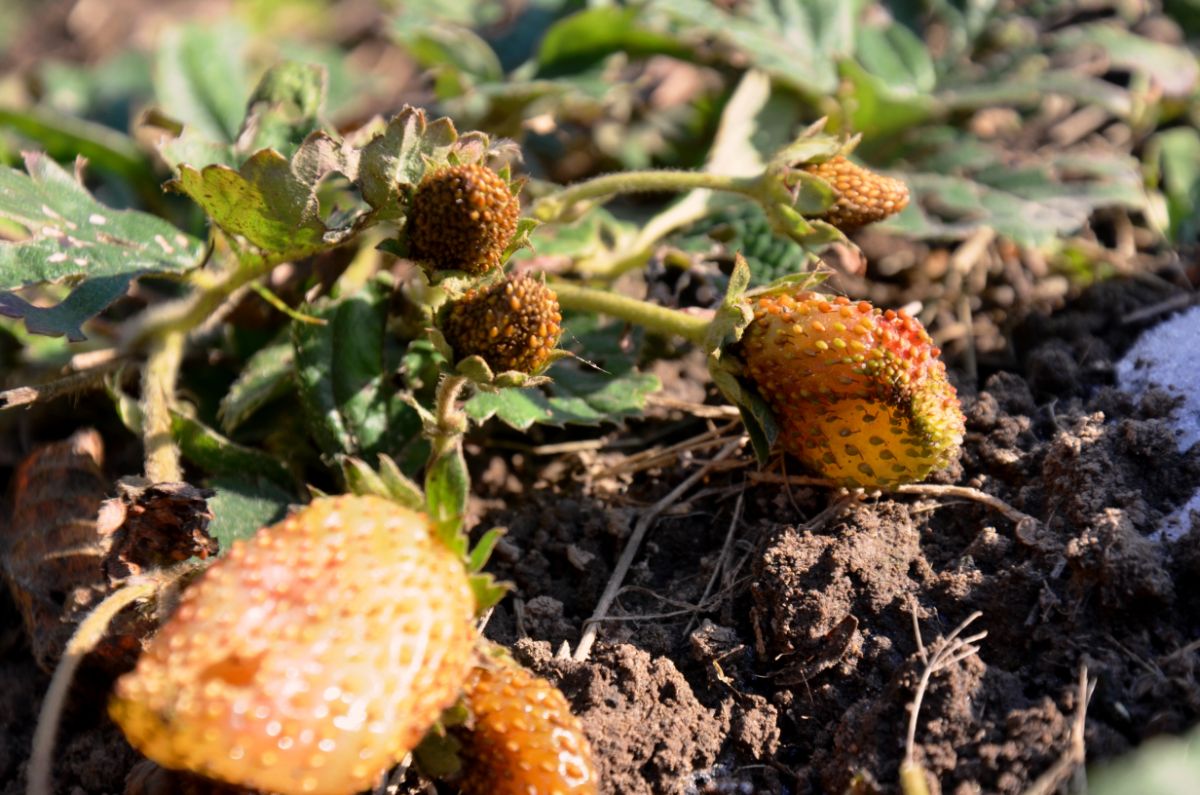
The process of moving water throughout a plant requires some energy. This energy is generated by the process of cellular respiration. If the soil is waterlogged, oxygen levels can drop to levels that do not allow the roots to respire. If this occurs, they will not be able to transport sufficient amounts of water up into the plant, even though there is an abundance of water. This over-abundance of water will not only prevent water flow into the plant and thereby cause wilting, but it also sets up the plant for the next cause of wilting. In other words, if drowning doesn’t kill it, a disease probably will.
5. Wilting is part of the disease/infestation process…
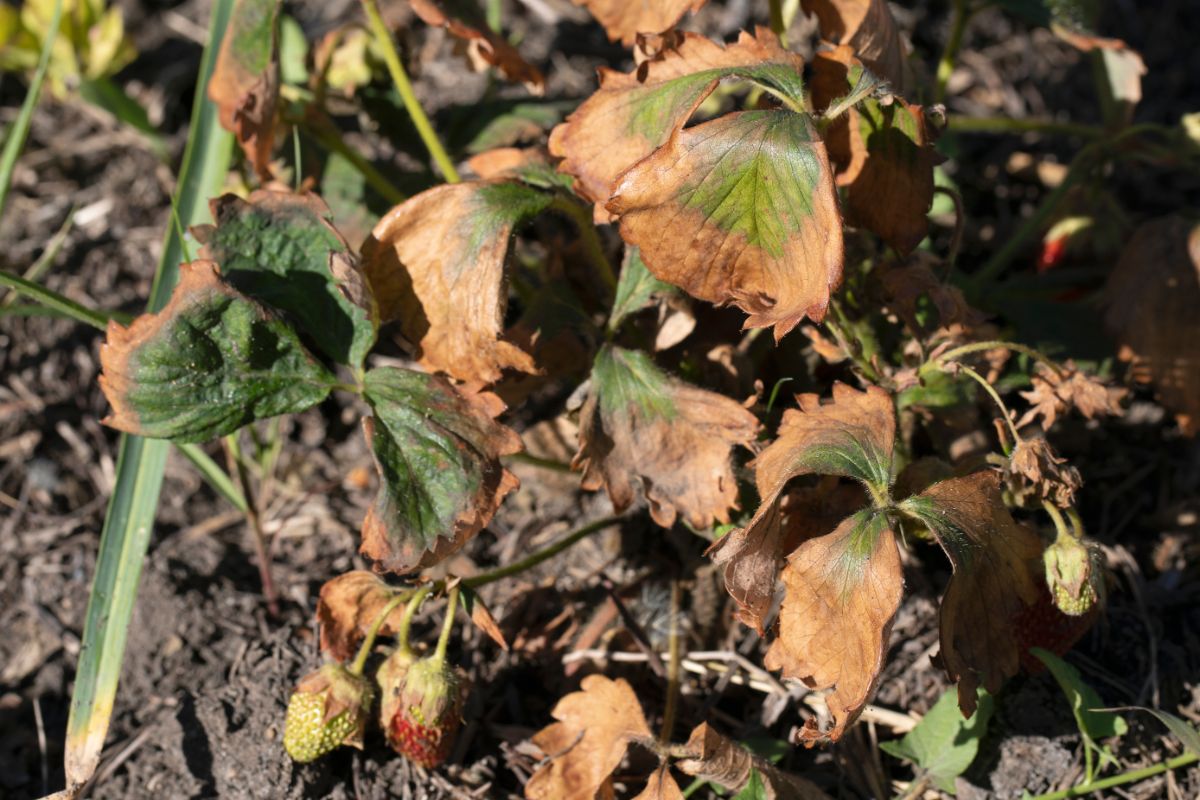
Blighted strawberry plants will likely eventually wilt. When pathogenic fungi or bacteria manage to infect the tissues of a strawberry plant, wilting is often not far behind. The pathogenic organisms work their way into the structures of the plant and can clog the vascular system. Clogged vascular systems leads to poor water flow which leads to wilting which leads to death. Also, parasitic infestations can also cause wilting. As mites or other insects feed on the strawberry plants, their cellular structure loses its integrity. Water leaks out of the holes, and as the plants lose more and more water from the damaged areas, they wilt and eventually die.
Wilting Strawberry Plants: Conclusion
Unlike trees and other woody plants that have celluloid supporting structures to keep them erect even when problems are affecting them, strawberry plants readily demonstrate their infirmity when they are afflicted. Wilting is a sign that something is wrong. If you notice your plants looking sickly and wilting, take quick action to identify the underlying problem and rectify it as soon as possible. Wilting decreases the ability of your plants to transpire and grow, so if you don’t remedy the cause of wilting quickly, your plants will die.
Wilting at its heart is all about water, as you may have noticed. Too much or too little or too salty and plants begin to struggle for life. Even when strawberry plants are infected with a bacterium or fungus, the pathogens typically kill indirectly as the water status of the plants at the cellular level is compromised. Be sure to review the Growing Strawberries reference page to get your strawberry plants off and growing well. And, be sure to see the Strawberry Plant reference page to learn more about the wonderful strawberry plant!








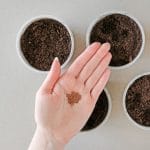

Leave a Reply